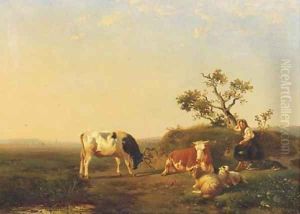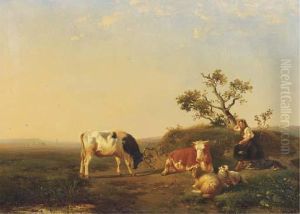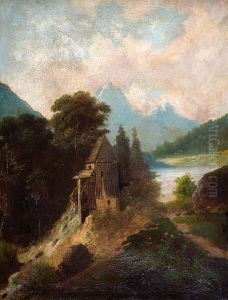Johan Daniel Koelman Paintings
Johan Daniel Koelman was a 19th-century artist, born on November 28, 1803, in Rotterdam, Netherlands. He was primarily known for his work as a sculptor though he also had considerable skills in painting and drawing. Koelman was trained in the classical tradition, which was prominent during his time, and his works often reflected the academic style of art that prevailed in the early to mid-19th century.
Koelman began his artistic education at a young age, showing a strong inclination and talent for the visual arts. He further honed his skills at the Academy of Fine Arts in his hometown, where he was able to study under accomplished teachers and sculptors of the era. His education provided him with a solid foundation in the techniques of sculpture, including working with materials such as marble, bronze, and wood.
Throughout his career, Johan Daniel Koelman produced a number of significant works, many of which received commendations and were exhibited in various art salons across Europe. He was adept at creating both public monuments and smaller, more intimate pieces. His sculptures often featured allegorical subjects, historical figures, and mythological themes, displaying both his technical prowess and his ability to imbue his works with emotional depth and narrative.
In addition to his sculptural works, Koelman contributed to the art world through his teachings. He was noted for his commitment to educating the next generation of artists, and he held several positions as an instructor and mentor throughout his lifetime. His influence extended to his students, many of whom went on to have successful careers in the arts, perpetuating the classical traditions and techniques that Koelman valued.
Johan Daniel Koelman's contributions to art were recognized with honors and awards during his lifetime. Despite this, compared to some of his contemporaries, Koelman may not be as widely remembered today. Nevertheless, his legacy endures through his surviving works and the impact he had on his students and the art community of his time.
He passed away on November 5, 1877, in Rotterdam. Koelman's life spanned a period of significant change in the arts, as the traditional academic styles of the early 19th century began to give way to more modern movements. However, his work remains a testament to the skill and aesthetic sensibilities of the classical sculptors of his age.


